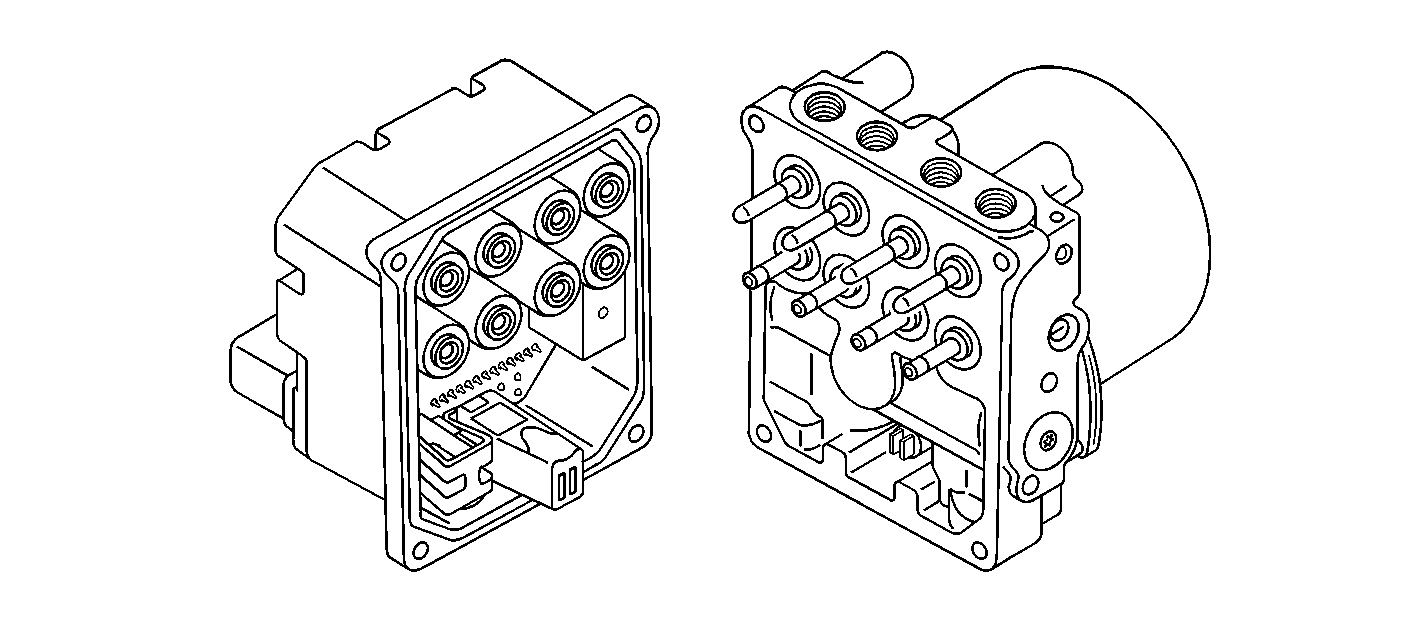
Circuit Description
The EBCM monitors vehicle speed deceleration and ABS/ETS/TCS activation in order to calculate brake rotor temperatures for the driven wheels. This sets when the calculated temperature exceeds the a predetermined temperature.
Conditions for Running the DTC
The ABS conditions and the braking conditions are normal.
Conditions for Setting the DTC
DTC C1238 could be set when either driven wheel estimated brake rotor temperature exceeds 375° C (700° F). If either driven wheel estimated brake rotor temperature has exceeded 375° C (700° F) during ABS or normal braking conditions, the code will not be set until the next TCS activation occurs. The code will not be set and TCS will not be disabled if both rotor estimated temperatures have cooled below 275° C (530° F) before the next TCS activation. If either driven wheel brake rotor temperatures has exceeded 375° C (700° F) during TCS then the code will be set immediately, but TCS will not be disabled until the end of the TCS event.
Action Taken When the DTC Sets
| • | The TCS is disabled. |
| • | The TRAC OFF indicator is turned on. |
Conditions for Clearing the DTC
| • | The condition for the DTC are no longer present. |
| • | Cooling of brake rotors. |
Diagnostic Aids
| • | It should be noted that DTC C1238 may and can set normally during extremely aggressive driving conditions. Always inquire about recent driving condition or driving habits whenever this code is set. |
| • | The following conditions are other possible causes of this malfunction: |
| - | Excessive brake usage. |
| - | Excessive TCS usage. |
| • | When DTC C1238 is set, the following components should be checked for any signs of excessive wear: |
| - | Brake pads. |
| - | Brake rotors. |
Step | Action | Value(s) | Yes | No |
|---|---|---|---|---|
1 | Did you perform the ABS Diagnostic System Check? | -- | Go to Step 2 | |
2 |
Does the scan tool display any other ABS/ETS/TCS DTCs? | -- | Go to Step 3 | |
3 | With a scan tool, observe the DTC Information parameter in the ABS/ETS/TCS Diagnostic Trouble Codes (DTCs). Does the scan tool indicate that DTC C1238 is current? | -- | Go to Step 5 | Go to Step 4 |
4 | Since most occurrences of this DTC are caused by excessive braking, review with the customer to verify the conditions under which the DTC set. Did vehicle operation cause this DTC to set? | -- | Go to Diagnostic Aids | Go to Step 5 |
5 |
Does the scan tool display Normal? | -- | Go to Step 7 | Go to Step 6 |
6 | Inspect the adjustment of the stoplamp switch. Refer to Stop Lamp Switch Adjustment in Hydraulic Brakes. Did you find and correct the condition? | -- | Go to Step 9 | Go to Step 7 |
7 |
Does the DTC reset as a current DTC? | -- | Go to Step 8 | System OK |
8 | Replace the EBCM. Refer to Electronic Brake Control Module Replacement Did you complete the replacement? | -- | Go to Step 9 | -- |
9 |
Does the DTC reset? | -- | Go to Step 2 | System OK |
